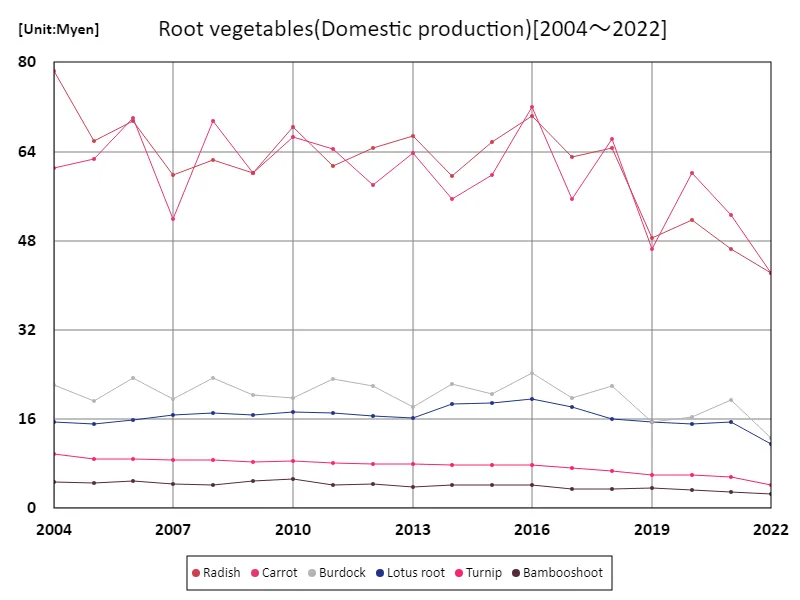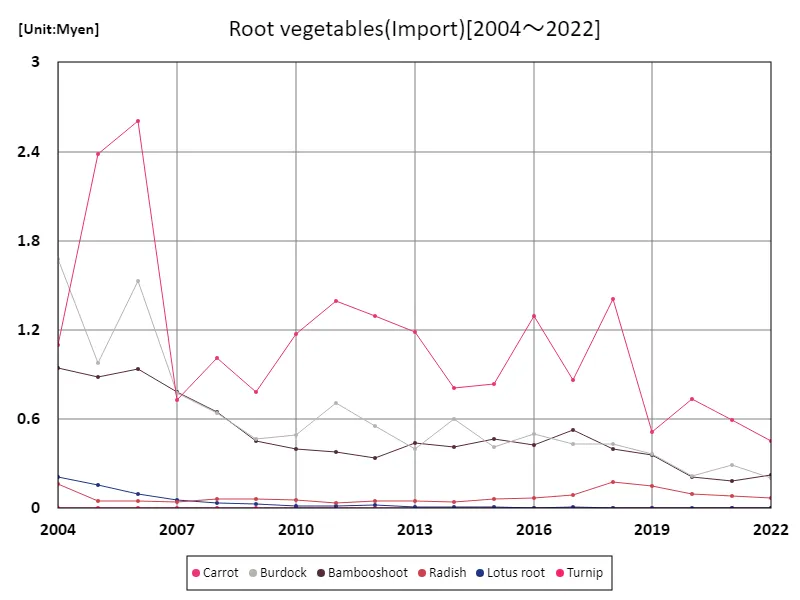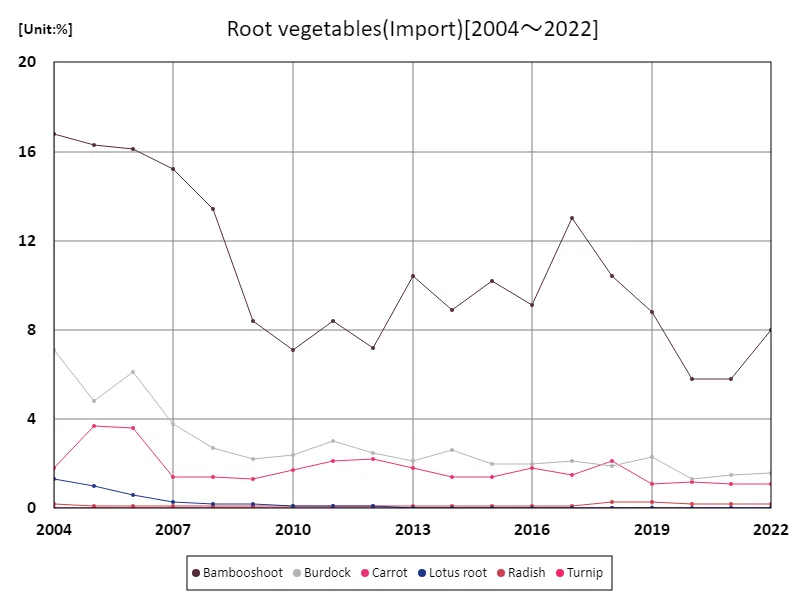Abstract
In Japan’s vegetable market, domestic production has long played a significant role, especially for root vegetables like carrots and bamboo shoots. In 2022, domestically produced carrots reached a peak price of 42.2 million yen, reflecting their high demand and value within the country. On the other hand, imported carrots had a much lower maximum price of 456,000 yen, highlighting the cost advantage of imports but also their smaller market share. Bamboo shoots, while a key ingredient in Japanese cuisine, had a relatively modest import proportion of 8%, indicating a strong domestic supply. These trends emphasize the preference for locally grown produce, with imports supplementing but not dominating the market.
Domestic price of root vegetables
Daikon, a staple in Japanese cuisine, reached its peak price of 78.5 million yen in 2004. However, by 2022, its price had declined to 53.8% of that peak, reflecting broader market trends in Japanese agriculture. This drop can be attributed to factors such as changes in consumer preferences, price competition from other root vegetables, and fluctuations in production costs. Despite the price decline, Daikon remains an essential crop due to its versatility and cultural importance. The trend suggests that while demand persists, shifts in production efficiency and market conditions have influenced its pricing over the years, showcasing the evolving dynamics of Japan’s root vegetable market.


The maximum is 78.5Myen[2004] of Radish, and the current value is about 53.8%
Import price of root vegetables
In 2022, carrots held the largest share of vegetable imports in Japan, with a total market value of 2.6 million yen. This reflects the growing reliance on imports to meet domestic demand, particularly for staple vegetables like carrots. While Japan has a strong tradition of domestic vegetable production, imports have become crucial to stabilizing supply, especially as production costs and climate challenges affect local farmers. The consistent value of imported carrots underscores the importance of balancing domestic production with strategic imports. Over the years, this trend highlights Japan’s increasing integration into global agricultural markets to ensure a steady supply of key vegetables.


The maximum is 2.6Myen[2006] of Carrot, and the current value is about 17.5%
Import (proportion) price of root vegetables
In 2004, bamboo shoots accounted for 16.8% of Japan’s root vegetable imports, the highest proportion recorded. However, by 2022, imports had fallen to 47.6% of that peak. This decline reflects Japan’s shift toward increased self-sufficiency in bamboo shoot production, as well as possible changes in consumer preferences or reduced demand for imports. While bamboo shoots remain a valued part of Japanese cuisine, domestic production has likely improved, reducing reliance on imports. This trend underscores the evolving nature of Japan’s agricultural sector, where efforts to bolster local supply chains have impacted the proportion of imported root vegetables.


The maximum is 16.8%[2004] of Bambooshoot, and the current value is about 47.6%



Comments